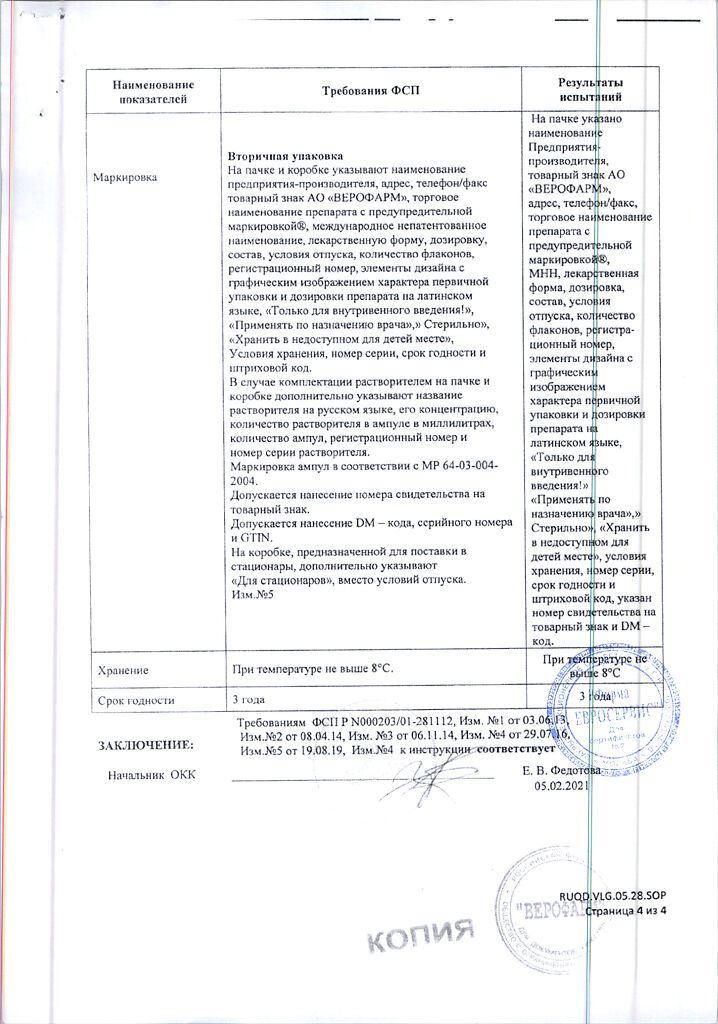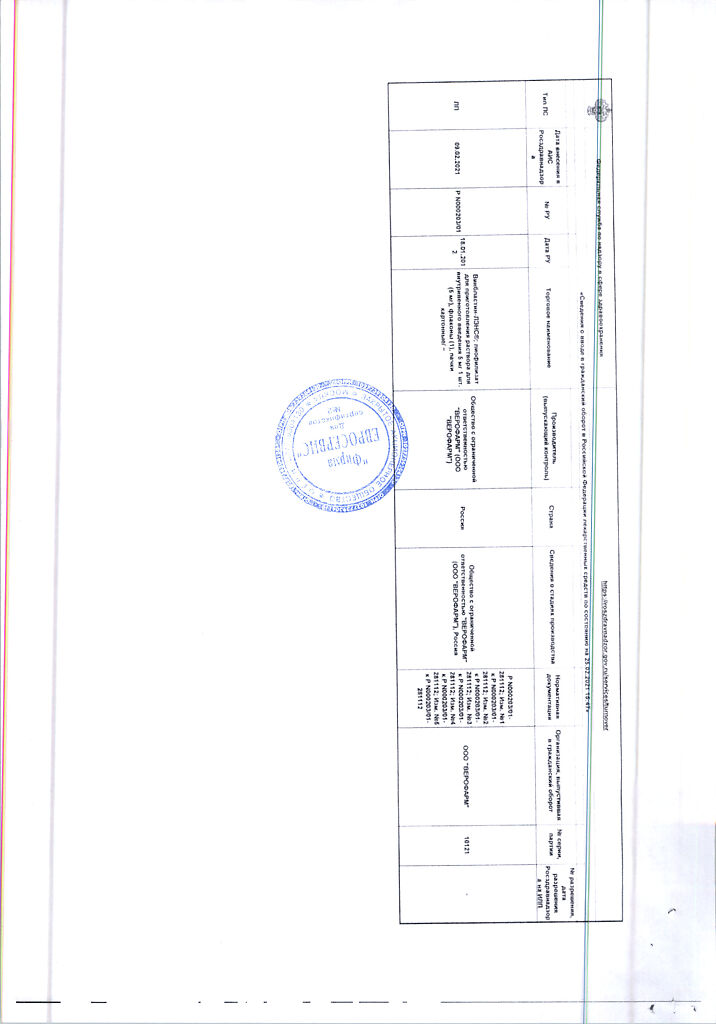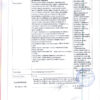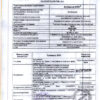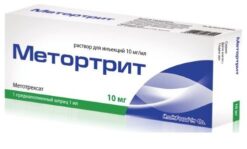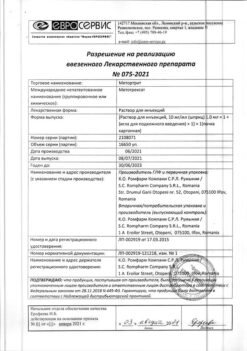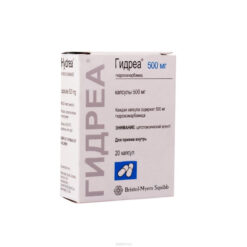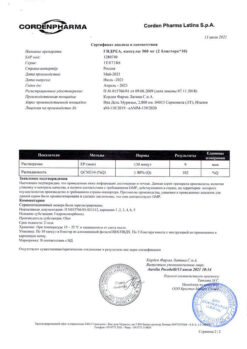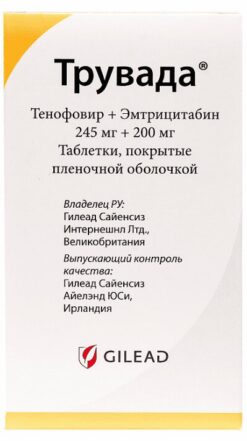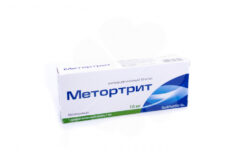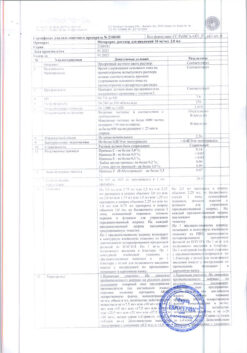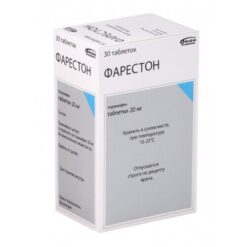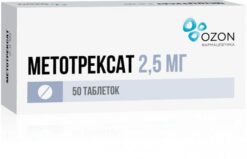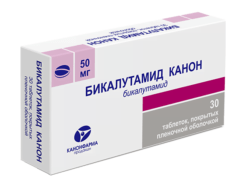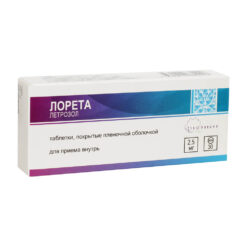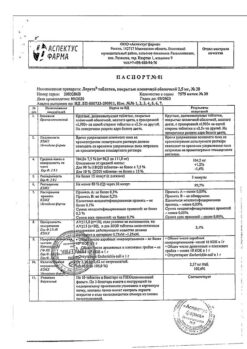No products in the cart.
Description
Vinblastine is an alkaloid isolated from the plant of the genus Vinca (periwinkle).
Blocks mitotic cell division in the metaphase of the cell cycle.
It acts by binding to microtubules through inhibition of mitotic spindle formation.
In tumor cells it selectively inhibits synthesis of DNA and RNA through inhibition of DNA-dependent RNA polymerase.
In tumor cells.
Indications
Indications
– lymphogranulomatosis
– non-Hodgkin’s lymphomas
– chronic lymphocytic leukemia
– germ cell tumors of the testicle and ovaries
– urothelial cancer (cancer of the bladder, renal pelvis, ureters, urethra)
– Letterer-Siwe disease (histiocytosis X)
– Kaposi’s sarcoma
– mycosis fungoides (generalized stages).
In addition, vinblastine can be used in the treatment of choriocarcinoma (after failure of other treatments) and breast cancer (after failure of other treatments)
Pharmacological effect
Pharmacological effect
Vinblastine is an alkaloid isolated from a plant of the genus Vinca (periwinkle).
Blocks mitotic cell division in metaphase of the cell cycle.
It acts by binding to microtubules by inhibiting the formation of mitotic spindles.
In tumor cells, it selectively inhibits DNA and RNA synthesis by inhibiting DNA-dependent RNA polymerase.
Special instructions
Special instructions
Vinblastine should be used with caution in patients with chickenpox (including recent or after contact with sick people), herpes zoster, other acute infectious diseases, gout, nephrolithiasis (including a history). Patients with impaired liver function are at increased risk of toxic effects from vinblastine.
Use with caution during treatment with drugs that inhibit the activity of the CYP3A isoenzyme.
Maximum depression of hematopoiesis (primarily a decrease in the number of leukocytes in the peripheral blood) is achieved 5-10 days after stopping the use of vinblastine. Normalization of the number of leukocytes in peripheral blood is observed after 7-14 days. The development of thrombocytopenia (less than 200,000/μl) is most likely in patients who have received previous antitumor or radiation therapy. Normalization of the platelet count is usually observed a few days after vinblastine is discontinued.
The risk of developing leukopenia when using vinblastine is increased in patients with cachexia and ulcerative lesions of the skin, so it is not recommended for patients with the above conditions. In patients with bone marrow metastases, a marked decrease in the number of leukocytes and platelets was noted after the use of vinblastine in moderate doses. In these cases, further use of vinblastine is not indicated.
During therapy, the activity of liver transaminases and LDH, the level of bilirubin and the concentration of uric acid in the blood plasma should be monitored.
During the treatment period, vaccination of patients and their family members is not recommended.
Intrathecal administration of vinblastine can be fatal. In case of accidental contact with the eyes, severe inflammation may occur.
Active ingredient
Active ingredient
Vinblastine
Composition
Composition
1 bottle contains:
Active substance:
vinblastine sulfate in terms of 100% substance 5 mg
Excipients:
missing
Pregnancy
Pregnancy
Vinblastine is contraindicated for use during pregnancy. If use is necessary during lactation, breastfeeding should be discontinued.
When used in women of childbearing age, it is recommended to use reliable methods of contraception.
Experimental studies have established the teratogenic effect of vinblastine.
Contraindications
Contraindications
hypersensitivity to vinblastine,
severe depression of bone marrow function,
pregnancy and lactation period,
bacterial and viral infections
With caution: with prior or simultaneous myelosuppressive chemotherapy and radiation therapy, as well as in old age, with leukopenia, thrombocytopenia and liver damage.
Side Effects
Side Effects
From the central nervous system and peripheral nervous system: neuropathy, neuritis of peripheral nerves, headache, depression, convulsions.
From the hematopoietic system: leukopenia, granulocytopenia, thrombocytopenia, anemia.
From the digestive system: anorexia, nausea, vomiting, abdominal pain, paralytic ileus, constipation, diarrhea, ulcerative stomatitis, hemorrhagic enterocolitis.
From the cardiovascular system: increased blood pressure, development of myocardial infarction, cerebrovascular accidents, increased symptoms of Raynaud’s disease.
From the respiratory system: acute respiratory failure, bronchospasm.
From the reproductive system: azoospermia, amenorrhea.
Other: alopecia, bone pain.
Interaction
Interaction
When used simultaneously with inhibitors of CYP3A isoenzyme activity, an earlier onset and/or aggravation of the severity of side effects of vinblastine is possible.
When used simultaneously with vinblastine, it is possible to reduce the concentration of phenytoin in the blood plasma and reduce its anticonvulsant activity, apparently due to a decrease in absorption, an increase in the metabolic rate and elimination of phenytoin.
When vinblastine is used concomitantly in high doses with interferon alpha-n1, severe myelodepression is possible.
Storage conditions
Storage conditions
In a place protected from light, at a temperature of 2–8 °C
Shelf life
Shelf life
2 years
Manufacturer
Manufacturer
Lance Farm, Russia
Additional information
| Shelf life | 2 years |
|---|---|
| Conditions of storage | In a light-protected place, at 2-8 °C |
| Manufacturer | Lance Farm, Russia |
| Medication form | lyophilizate |
| Brand | Lance Farm |
Related products
Buy Vinblastine-Lance, lyophilizate 5 mg with delivery to USA, UK, Europe and over 120 other countries.


